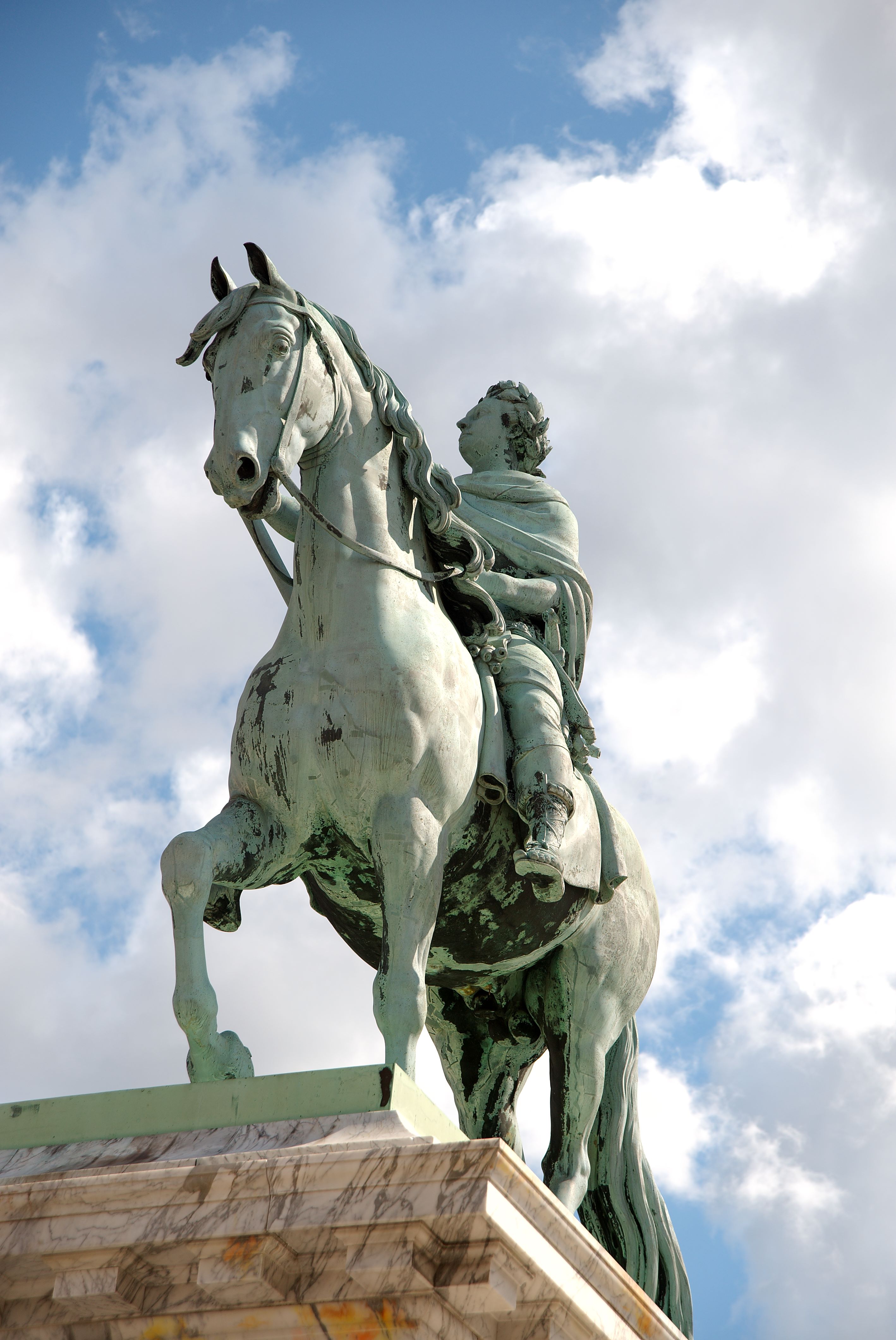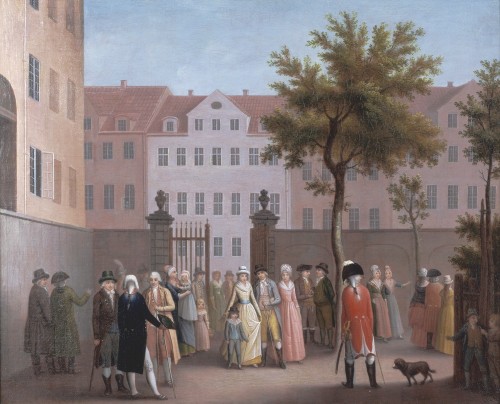|
August Saabye
August Vilhelm Saabye (7 August 1823 – 12 November 1916), also known as August Wilhelm Saabye, was a Danish sculptor. Early life and education Saabye was born in Skivholme, , Aarhus, the son of vicar Erhard Saabye (1778–1851) and Susanna Schmidt (1785–1856). He competed as an individual for the Neuhausen Prize in 1854 and although he did not win, his work was praised so that he obtained the support of Herman Wilhelm Bissen and his father's permission to take up sculpture. He studied at the Copenhagen Academy of Fine Arts and then worked in Bissen's studio, learning the neoclassical tradition of Bertel Thorvaldsen. He initially undertook art and design work, then produced small bronzes, reliefs and portrait busts, with elaborate detail and embossing. Saabye went to Rome via Paris in 1855, staying there until 1865, learning more about the sculptures of antiquity. Here he started producing larger statues. Career Saabye was made a member of the Danish Academy of Fin ... [...More Info...] [...Related Items...] OR: [Wikipedia] [Google] [Baidu] |
Danish Sculpture
Danish sculpture as a nationally recognized art form can be traced back to 1752 when Jacques Saly was commissioned to execute a statue of King Frederick V of Denmark on horseback. While Bertel Thorvaldsen was undoubtedly the country's most prominent contributor, many other players have produced fine work, especially in the areas of Neoclassical sculpture, Neoclassicism, Realism (arts), Realism, and in Historicism (art), Historicism, the latter resulting from growing consciousness of a national identity. More recently, Danish sculpture has been inspired by European trends, especially those from Paris, including Surrealism and Modern art, Modernism. The beginnings The earliest traces of sculpture in Denmark date from the 12th century when a stonemason known as Horder (sculptor), Horder was active in the east of Jutland and on the island of Funen decorating churches, especially doors and fonts. From roughly the same period, there are sculpted figures in the granite reliefs depicting t ... [...More Info...] [...Related Items...] OR: [Wikipedia] [Google] [Baidu] |
Aarhus
Aarhus (, , ; officially spelled Århus from 1948 until 1 January 2011) is the second-largest city in Denmark and the seat of Aarhus municipality, Aarhus Municipality. It is located on the eastern shore of Jutland in the Kattegat sea and approximately northwest of Copenhagen. Dating back to the late 8th century, Aarhus was founded as a harbour settlement at the mouth of the Aarhus River and quickly became a trade hub. The first Christian church was built here around the year 900 and later in the Viking Age the town was fortified with defensive ramparts. The Ancient See of Aarhus, bishopric of Aarhus grew steadily stronger and more prosperous, building several religious institutions in the town during the early Middle Ages. Trade continued to improve, although it was not until 1441 that Aarhus was granted market town privileges, and the population of Aarhus remained relatively stable until the 19th century. The city began to grow significantly as trade prospered in the mid-18 ... [...More Info...] [...Related Items...] OR: [Wikipedia] [Google] [Baidu] |
Rosenborg Castle Gardens
Rosenborg Castle Gardens (Danish: ''Kongens Have''; literally ''The King's Garden'') is the oldest and most visited park in central Copenhagen, Denmark. Established in the early 17th century as the private gardens of King Christian IV of Denmark, Christian IV's Rosenborg Castle, the park also contains several other historical buildings, including Rosenborg Barracks, home to the Royal Life Guards (Denmark), Royal Guards, as well as a high number of statues and monuments. The park also holds art exhibitions and other events such as concerts in the summer. History The Renaissance gardens The park traces its history back to 1606 when King Christian IV of Denmark, Christian IV acquired land outside Copenhagen's East Rampart and established a pleasure garden in Gardens of the French Renaissance, Renaissance style which also delivered fruit, vegetables and flowers for the royal household at Copenhagen Castle. The garden had a relatively small pavilion which was later expanded into prese ... [...More Info...] [...Related Items...] OR: [Wikipedia] [Google] [Baidu] |
19th-century Danish Sculptors
The 19th century began on 1 January 1801 (represented by the Roman numerals MDCCCI), and ended on 31 December 1900 (MCM). It was the 9th century of the 2nd millennium. It was characterized by vast social upheaval. Slavery was abolished in much of Europe and the Americas. The First Industrial Revolution, though it began in the late 18th century, expanded beyond its British homeland for the first time during the 19th century, particularly remaking the economies and societies of the Low Countries, France, the Rhineland, Northern Italy, and the Northeastern United States. A few decades later, the Second Industrial Revolution led to ever more massive urbanization and much higher levels of productivity, profit, and prosperity, a pattern that continued into the 20th century. The Catholic Church, in response to the growing influence and power of modernism, secularism and materialism, formed the First Vatican Council in the late 19th century to deal with such problems and confirm cer ... [...More Info...] [...Related Items...] OR: [Wikipedia] [Google] [Baidu] |
Royal Danish Academy Of Fine Arts Alumni
Royal may refer to: People * Royal (name), a list of people with either the surname or given name * A member of a royal family or royalty Places United States * Royal, Arkansas, an unincorporated community * Royal, Illinois, a village * Royal, Iowa, a city * Royal, Missouri, an unincorporated community * Royal, Nebraska, a village * Royal, Franklin County, North Carolina, an unincorporated area * Royal, Utah, a ghost town * Royal, West Virginia, an unincorporated community * Royal Gorge, on the Arkansas River in Colorado * Royal Township (other) Elsewhere * Mount Royal, a hill in Montreal, Canada * Royal Canal, Dublin, Ireland * Royal National Park, New South Wales, Australia Arts, entertainment, and media * ''Royal'' (Jesse Royal album), 2021 * Royal (Ayo album), 2020 * ''The Royal'', a British medical drama television series * '' The Royal Magazine'', a monthly British literary magazine published between 1898 and 1939 * '' The Raja Saab'', working title ''Roy ... [...More Info...] [...Related Items...] OR: [Wikipedia] [Google] [Baidu] |
Artists From Aarhus
An artist is a person engaged in an activity related to creating art, practicing the arts, or demonstrating the work of art. The most common usage (in both everyday speech and academic discourse) refers to a practitioner in the visual arts only. However, the term is also often used in the entertainment business to refer to actors, musicians, singers, dancers and other performers, in which they are known as ''Artiste'' instead. ''Artiste'' (French) is a variant used in English in this context, but this use has become rare. The use of the term "artist" to describe writers is valid, but less common, and mostly restricted to contexts such as critics' reviews; "author" is generally used instead. Dictionary definitions The ''Oxford English Dictionary'' defines the older, broader meanings of the word "artist": * A learned person or Master of Arts * One who pursues a practical science, traditionally medicine, astrology, alchemy, chemistry * A follower of a pursuit in which skill co ... [...More Info...] [...Related Items...] OR: [Wikipedia] [Google] [Baidu] |
Danish Sculptors
Danish may refer to: * Something of, from, or related to the country of Denmark People * A Danish person, also called a "Dane", can be a national or citizen of Denmark (see Demographics of Denmark) * Culture of Denmark * Danish people or Danes, people with a Danish ancestral or ethnic identity * A member of the Danes, a Germanic tribe * Danish (name), a male given name and surname Language * Danish language, a North Germanic language used mostly in Denmark and Northern Germany * Danish tongue or Old Norse, the parent language of all North Germanic languages Food * Danish cuisine * Danish pastry, often simply called a "Danish" See also * Dane (other) * * Gdańsk * List of Danes * Languages of Denmark The Kingdom of Denmark has only one official language, Danish, the national language of the Danish people, but there are several minority languages spoken, namely Faroese, German, and Greenlandic. A large majority (about 86%) of Danes also ... {{disambigu ... [...More Info...] [...Related Items...] OR: [Wikipedia] [Google] [Baidu] |
1916 Deaths
Events Below, the events of the First World War have the "WWI" prefix. January * January 1 – The British Empire, British Royal Army Medical Corps carries out the first successful blood transfusion, using blood that has been stored and cooled. * January 9 – WWI: Gallipoli Campaign – The last British troops are evacuated from Gallipoli, as the Ottoman Empire prevails over a joint British and French operation to capture Constantinople. * January 10 – WWI: Erzurum Offensive – Russia defeats the Ottoman Empire. * January 12 – The Gilbert and Ellice Islands Colony, part of the British Empire, is established in modern-day Tuvalu and Kiribati. * January 13 – WWI: Battle of Wadi (1916), Battle of Wadi – Ottoman Empire forces defeat the British, during the Mesopotamian campaign in modern-day Iraq. * January 29 – WWI: Paris is bombed by German Empire, German zeppelins. * January 31 – WWI: An attack is planned on Verdun, France. Febru ... [...More Info...] [...Related Items...] OR: [Wikipedia] [Google] [Baidu] |
1823 Births
Events January–March * January 22 – By secret treaty signed at the Congress of Verona#Spanish Question, Congress of Verona, the Quintuple Alliance gives France a mandate to invade Spain for the purpose of restoring Ferdinand VII of Spain, Ferdinand VII (who has been captured by armed revolutionary liberals) as absolute monarch of the country. * January 23 – In Paviland Cave on the Gower Peninsula of Wales, William Buckland inspects the "Red Lady of Paviland", the first identification of a prehistoric (male) human burial (although Buckland dates it as Roman). * February 3 ** Jackson Male Academy, precursor of Union University, opens in Tennessee. ** Gioachino Rossini's opera ''Semiramide'' is first performed, at ''La Fenice'' in Venice. * February 10 – The first worldwide carnival parade takes place in Cologne, Kingdom of Prussia, Prussia. * February 11 – Carnival tragedy of 1823: About 110 boys are killed during a stampede at the Franciscan Church of St Mary of Je ... [...More Info...] [...Related Items...] OR: [Wikipedia] [Google] [Baidu] |
Garnisons Cemetery
Garrison Cemetery ( Danish: Garnisons Kirkegård) is a cemetery in Copenhagen, Denmark. It was inaugurated in 1671 on a site just outside the Eastern City Gate, as a military cemetery complementing the naval Holmens Cemetery which had been inaugurated a few years earlier on a neighbouring site. Later the cemetery was opened to civilian burials as well. Garrison Cemetery is an independent cemetery, managed by the parochial church council, placed under the army's highest authority. History Originally named ''Soldaterkirkegården'' (Soldiers' Cemetery), Garrison Cemetery was founded by a decree from King Frederick III and laid out in 1664 on a site outside the Bastioned Fortifications, next to the main road leading in and out of the Eastern City Gate and opposite the naval Holmens Cemetery which was laid out around the same time. Burials began the same year but the site, former marshland, was rather unsuitable for the purpose since ground water levels made it hard to bury the bo ... [...More Info...] [...Related Items...] OR: [Wikipedia] [Google] [Baidu] |






